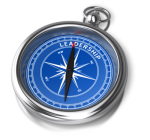[vc_row][vc_column][vc_row_inner][vc_column_inner width=”1/4″][vc_column_text] [/vc_column_text][/vc_column_inner][vc_column_inner width=”3/4″ css=”.vc_custom_1434994347951{padding-top: 15px !important;}”][vc_column_text]There are five new dimensions of leadership necessary for success in the Digital Era. This article provides a summary of these dimensions, along with related action items. A fuller description of the dimensions and recommendations is available via TD Magazine, in both text and audio (podcast) formats.[/vc_column_text][/vc_column_inner][/vc_row_inner][vc_column_text]Earlier this year I was invited to write an article for the June 2015 issue of TD Magazine discussing the dimensions of leadership necessary for success in the Digital Era. Here is an Executive Summary of my thoughts and recommendations. The full article, in both text and audio (podcast) formats, is available here.[/vc_column_text][/vc_column][/vc_row][vc_row][vc_column][vc_column_text css=”.vc_custom_1434992214608{padding-bottom: 5px !important;}”]
[/vc_column_text][/vc_column_inner][vc_column_inner width=”3/4″ css=”.vc_custom_1434994347951{padding-top: 15px !important;}”][vc_column_text]There are five new dimensions of leadership necessary for success in the Digital Era. This article provides a summary of these dimensions, along with related action items. A fuller description of the dimensions and recommendations is available via TD Magazine, in both text and audio (podcast) formats.[/vc_column_text][/vc_column_inner][/vc_row_inner][vc_column_text]Earlier this year I was invited to write an article for the June 2015 issue of TD Magazine discussing the dimensions of leadership necessary for success in the Digital Era. Here is an Executive Summary of my thoughts and recommendations. The full article, in both text and audio (podcast) formats, is available here.[/vc_column_text][/vc_column][/vc_row][vc_row][vc_column][vc_column_text css=”.vc_custom_1434992214608{padding-bottom: 5px !important;}”]
Digital Era Dimensions of Leadership
[/vc_column_text][vc_empty_space height=”10px”][vc_column_text]In the Digital Era, the fundamental nature of leadership has not changed, but the rapid development and deployment of social and digital technologies means that the expectations for leaders are evolving.
There are five new dimensions of leadership that reflect the increasing role and ongoing impact of new technologies in organizations, industries, economies, and societies. These dimensions extend traditional notions of effective leadership by adding a digital element to leaders’ role requirements and responsibilities. Although these new dimensions are primarily applied to top organizational leaders, the underlying principles are relevant for all leadership levels.
Digital Literacy. Leaders must be digitally literate, and they should ensure the people who work for them are as well. They must recognize that the over-reliance on the distinction between “digital natives” and “digital immigrants” is counter-productive. Fluency is a state of mind, not a factor of chronological age. Technology doesn’t care how old people are. Anyone can be as digitally sophisticated as they choose to be.
Applications of Social and Digital Technologies. Leaders must be able to see the competence-extending potential of technological innovations and consider the revenue-generating possibilities of pursuing them. They must also understand the wide range of ways that social and digital technologies can be leveraged internally to enhance communication and collaboration, increase innovation, streamline operations and generally improve the performance of both individuals and groups. Finally, they must recognize that their human capital and talent management practices will be transformed by social and digital technologies.
Implications of Social and Digital Technologies. Leaders must understand that social and digital technologies are changing the nature of work, and revise their approaches to workforce management accordingly. They must also help their organizations anticipate and manage Digital Era risks.
Digital Transformation. Leaders are critical to laying the foundation for and facilitating digital transformation. They must recognize that the process of becoming a digital organization is a marathon not a sprint, and generally requires a holistic, integrated, and mindful approach to produce optimum results. They must:
- Create the foundation for digital transformation by developing a strategy, laying out a roadmap, and instituting action plans.
- Identify and perpetuate the cultural values that can lead to success.
- Serve as champions and change agents.
- Create and maintain internal governance structures that establish order and structure while giving people the freedom to collaborate and innovate.
- Ensure their workforce is ready for and committed to change, and that they have the digital competencies they need to succeed.
Digitally-Savvy Leadership Style. Leaders must adapt their leadership styles to meet new digitally oriented demands and expectations. They must make some important mental shifts, including embracing changes in the balance of power, accepting a loss of control, and developing a more inclusive and participative attitude toward leading.
Behaviorally, leaders must be willing and able to communicate in new ways using new channels and tools, with greater emphasis on dialogue and collaboration and less emphasis on command-and-control. Digital communication should not be viewed as an adjunct to other communication forms; rather, it should be fully integrated into the ways in which they connect with others. They should rely on ALL forms of media – both traditional and new – to achieve their goals.[/vc_column_text][/vc_column][/vc_row][vc_row][vc_column][vc_column_text css=”.vc_custom_1434993121420{padding-bottom: 5px !important;}”]
Action Items
[/vc_column_text][vc_empty_space height=”10px”][vc_column_text]Are you and your colleagues prepared to lead in the Digital Era? Here are some concrete actions that will help you get yourself and others on the right path.
Make time to become more digitally aware, literate, and active. Leaders must carve out time each week (ideally, daily) to focus on nonurgent but critically important digital technology-related issues and tasks.
Educate yourself, both conceptually and tactically. This means understanding digital technology trends and issues at a high level, paying attention to how seemingly disparate topics are connected, and experimenting with specific tools and technologies sufficiently to have a basic idea of how they work.
Commit yourself to developing better digital habits. Everyone can learn how to work with the digital tools at their disposal more efficiently and effectively, including (and especially) email and Office products.
Help others become more digitally literate. Leaders can help others learn and grow by being champions and cheerleaders and leading by example. Create an environment for ongoing learning to enhance digital literacy through both formal and informal means, and offer guidance, instruction, and encouragement to others who are still climbing their digital literacy learning curves.[/vc_column_text][/vc_column][/vc_row][vc_row][vc_column][vc_column_text css=”.vc_custom_1411502073503{padding-bottom: 5px !important;}”]
Your Thoughts?
[/vc_column_text][vc_empty_space height=”10px”][vc_column_text css=”.vc_custom_1434994313103{padding-bottom: 10px !important;}”]As always, I welcome your feedback. What questions has this piece raised for you? What would you add to, change, or delete from the analysis and recommendations provided?[/vc_column_text][/vc_column][/vc_row]





